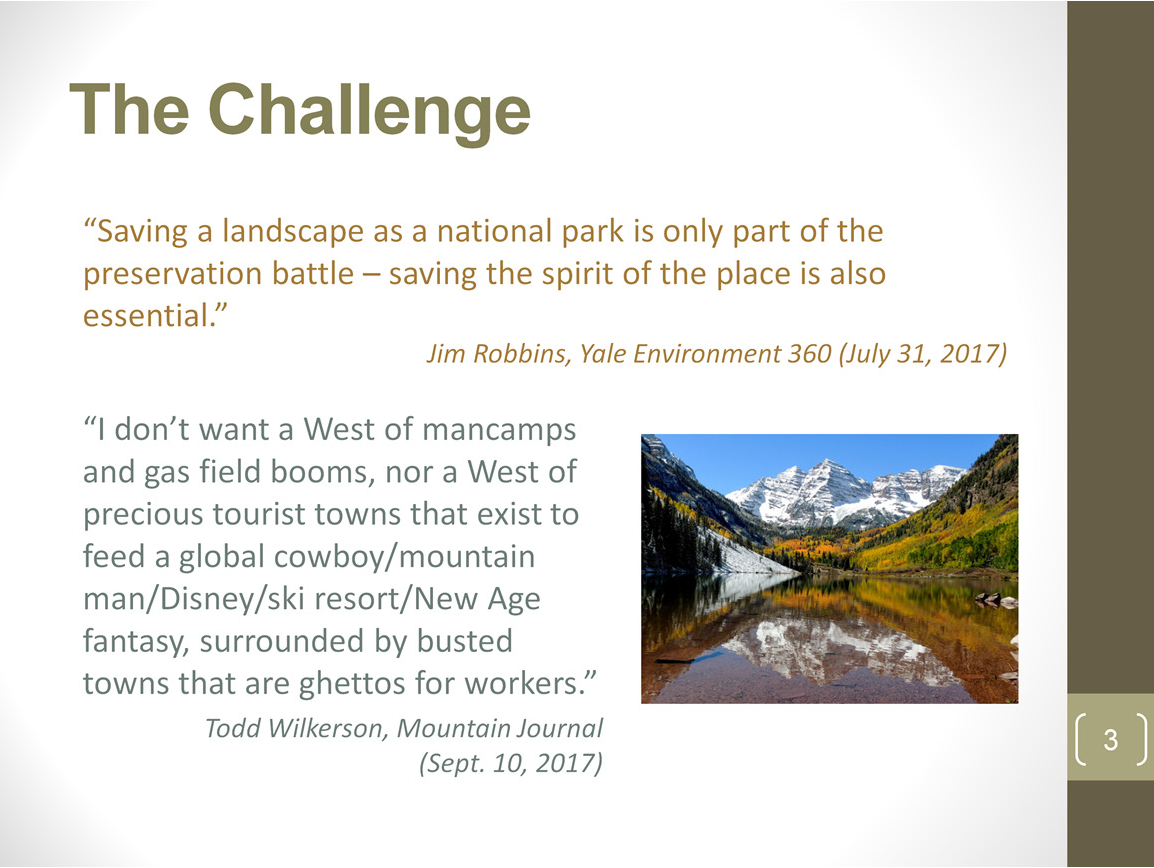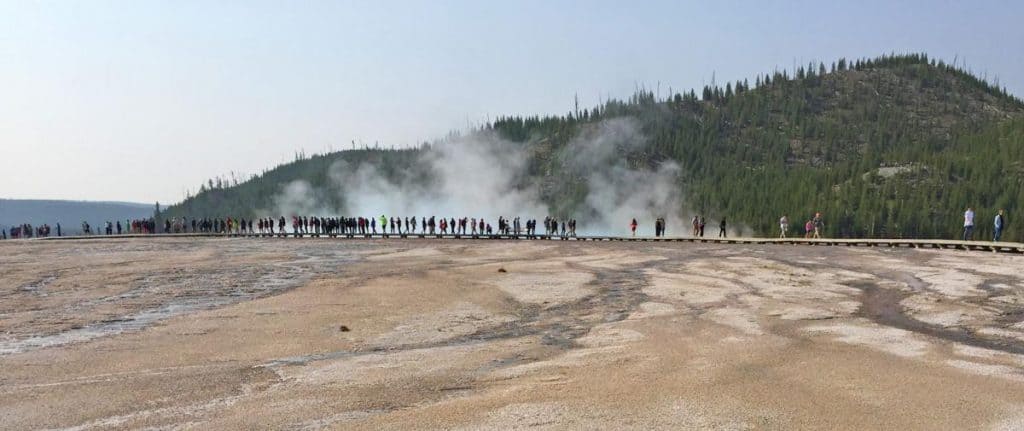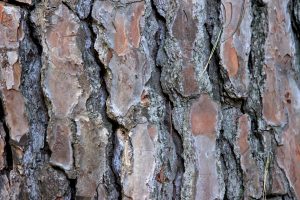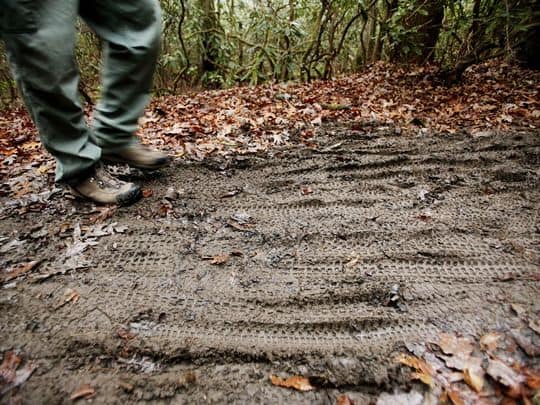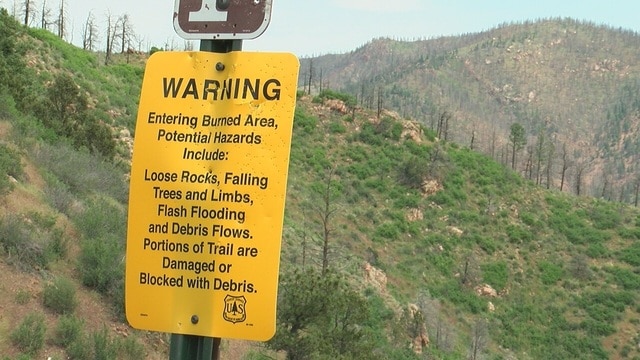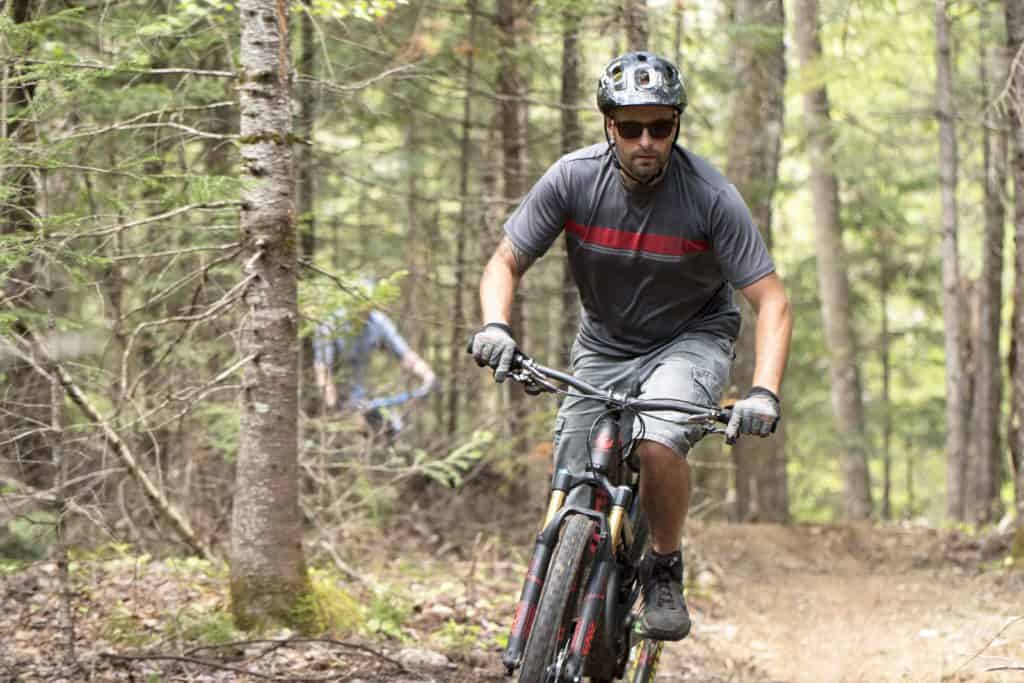
Thanks to Forest Business Network for this story on People Getting Along… It’s interesting to think about the outlets that provide info on People Getting Along (usually local?) compared to say, national outlets, and how that might form people’s opinions of How Bad Things Are for the environment..
“Forests and tourists can have a symbiotic relationship here in Vermont,”says Langlais. “Whether it’s board feet, miles of smiles, or both, our recreation and forest products economies depend on forests staying as unfragmented, non-parcelized blocks of healthy forest– that’s the point of common interest.”
Managing forests for recreation
The Dashney trails near the base of Burke Mountain, including Trillium and Moose Alley, were part of an active timber harvest by HB Logging over the past few years. Owner Heath Bunnell, a master logger and avid mountain biker, was careful to plan a harvest that would preserve the integrity of the trails. “We harvest in the winter, when the ground is frozen,” said Bunnell, “so it can be hard to know where the trails are running. It’s important to get everyone together in advance to create a clear plan.” Bunnell met with a forester and representatives of the Kingdom Trails Association to walk through the area and develop a plan that laid out very specific routes for the logging equipment. “We try to cross the trail once at a ninety degree angle instead of crossing at multiple points,” said Bunnell. “It makes clean up easier and lessens the impact on the trail. Aesthetically, people don’t want to see a big mess in the forest. They want clear view lines and clean trails.” For the Dashney area harvest, Bunnell cleared a few small areas off the trail where slash was deposited to create wildlife habitat for songbirds, grouse and small mammals. “The fact is, we live in an area where tourism is the number one business,” said Bunnell, “so we have to manage the forests here with that in mind.”
Part of our DNA
And yet, the first business visitors see driving into East Burke is the Timber Resource Group (TRG) on Route 114, a concentration yard where logs are aggregated throughout the winter for eventual transport to mills. As mountain biking season starts up in the spring, Craig Owen, manager of TRG, estimates the yard holds 2.6 million board feet, all of which will be moved out by the end of June by log haulers like Ben Morrison of Morrison Trucking. Further out of town, retired logger Oscar Perkins meticulously stacks 100 cords of firewood into neat walls visible from the road, one of which encompasses an old bike painted bright red. Oscar’s daughter, Heidi, is the organizer of Rasputitsa, a 40 mile mountain bike race held every April in East Burke. “You can’t separate the logging from the biking community,” says Langlais. “The forests are part of our DNA here. We work where we play and play where we work.”

